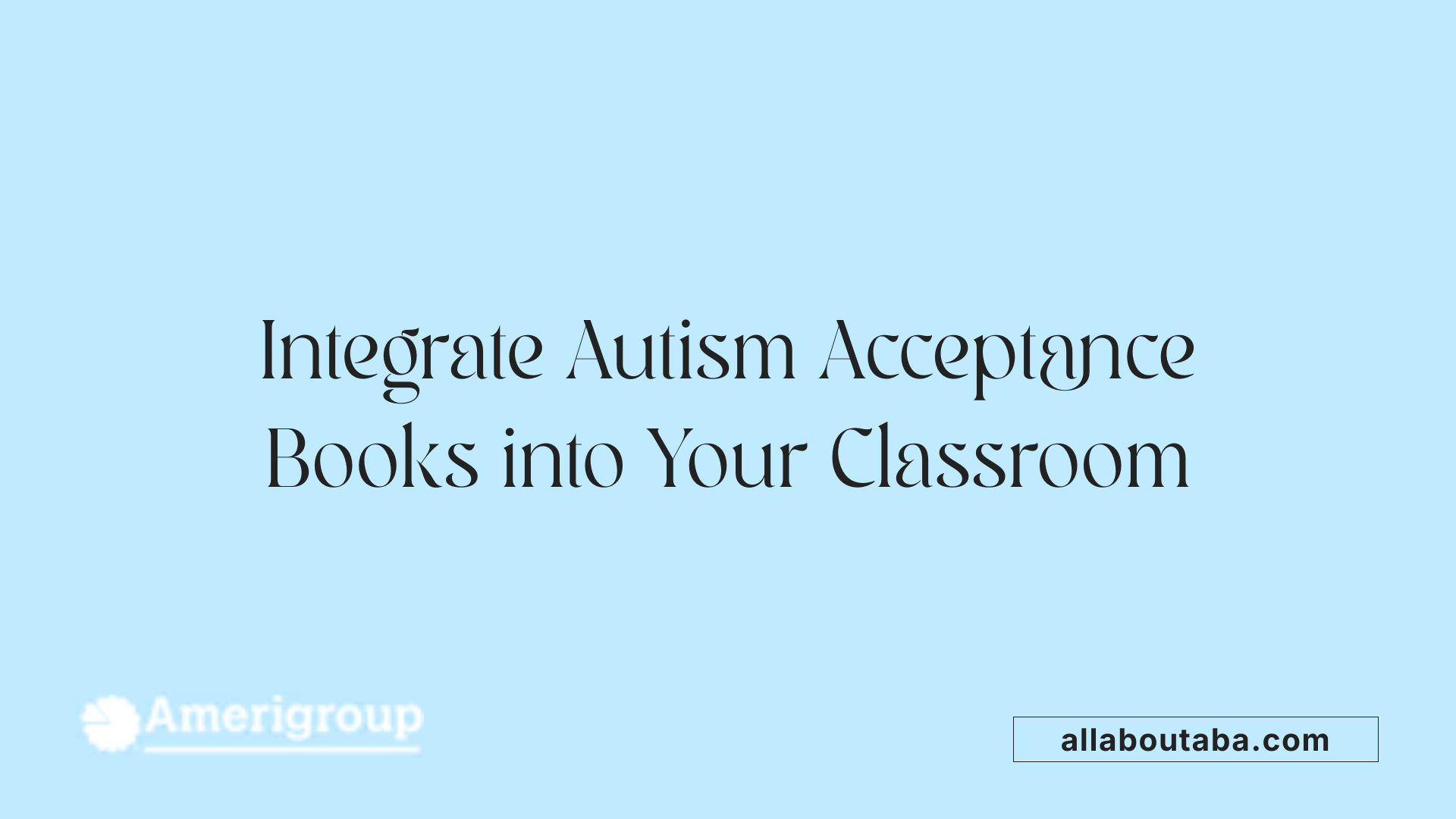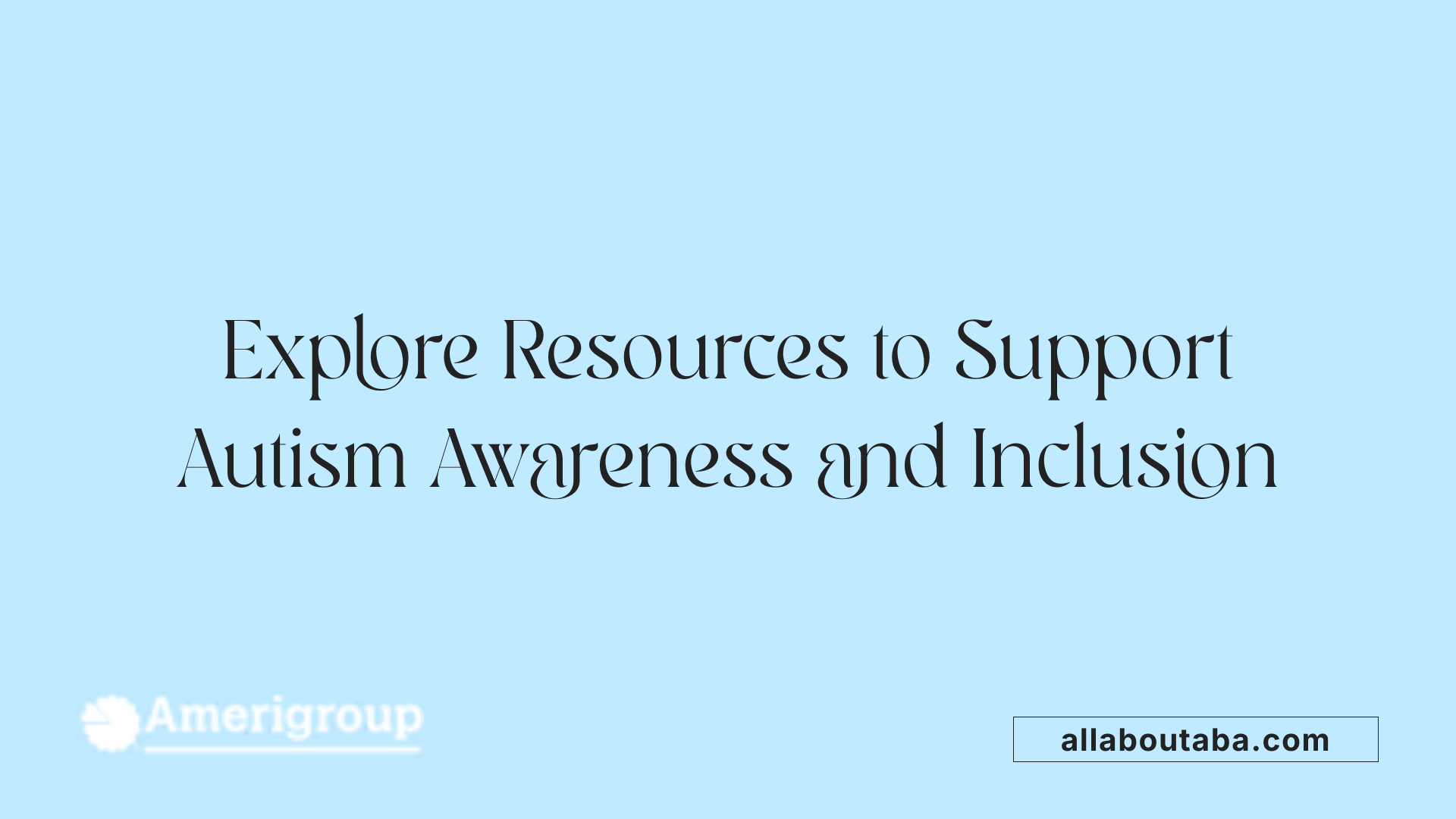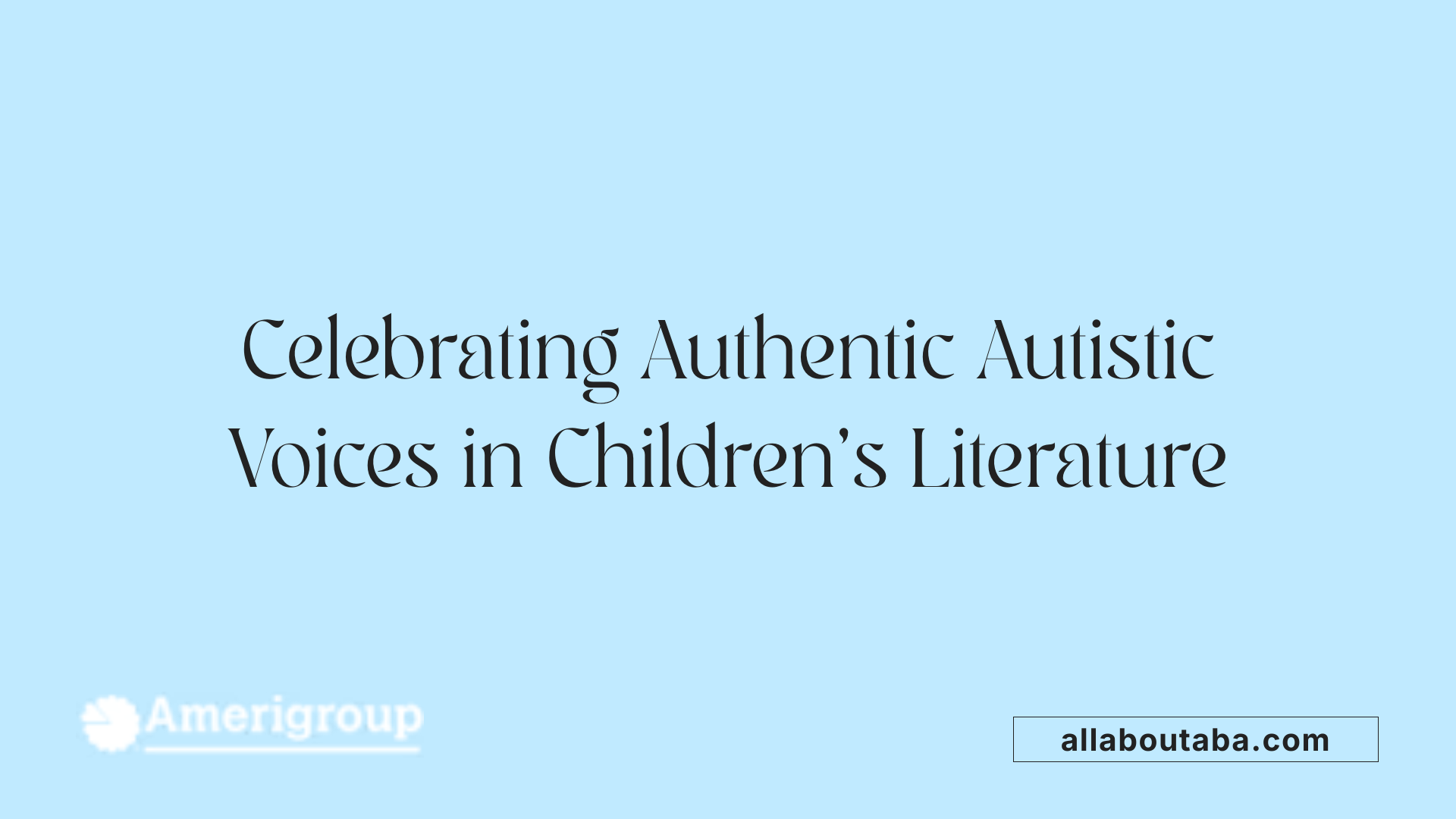Best Books To Teach Kids About Autism Acceptance
Introducing Kids to Neurodiversity Through Literature
In recent years, increasing awareness about autism spectrum disorder (ASD) has highlighted the importance of inclusive education and acceptance. Books for children serve as powerful tools to foster empathy, understanding, and compassion. This article explores a curated selection of the best books designed to teach kids about autism acceptance, emphasizing authentic voices, diversity of experiences, and positive portrayals that help normalize neurodiversity in educational and home settings.
Recommended Books for Teaching Autism Acceptance and Understanding

What are recommended books for teaching children about autism and promoting understanding and acceptance?
There is a broad selection of children’s books designed to foster empathy, understanding, and acceptance of autism and neurodiversity. A curated list features over 60 titles, each offering insights into the experiences of autistic individuals and ways to promote kindness.
Some popular titles include "Uniquely Wired" by Julia Cook, which highlights how autistic traits can be strengths; "A Friend Like Simon" by Kate Gaynor, focusing on positive interactions with peers; "The Girl Who Thought in Pictures" about Dr. Temple Grandin, showcasing her journey and talents; and "I See Things Differently," which helps children appreciate different perspectives.
These books are rich in stories and illustrations that connect young readers with the world of autistic peers. They promote feelings of understanding and acceptance by depicting diverse experiences, sensory sensitivities, and social dynamics.
Importantly, many titles are authored by autistic individuals or experts involved with autism education. This ensures authentic representations and honest insights into what it means to live with autism.
For educators, parents, and caregivers, exploring collections tailored to various age groups and classroom settings can be a valuable resource. These books serve as effective tools to teach children about the importance of inclusivity, respecting differences, and recognizing the strengths that come with neurodiversity.
Engaging with these stories helps children develop empathy and supports social-emotional learning, paving the way for a more accepting and inclusive society.
| Title | Author | Focus Area | Suitable Age |
|---|---|---|---|
| Uniquely Wired | Julia Cook | Autism as a strength | 5-8 years |
| A Friend Like Simon | Kate Gaynor | Peer relationships | 6-10 years |
| The Girl Who Thought in Pictures | Temple Grandin | Autistic talents | 8-12 years |
| I See Things Differently | Pat Thomas | Perspective-taking | 4-8 years |
| All My Stripes | Shaina Rudolph & Danielle Royer | Self-acceptance | 4-8 years |
Using such literature thoughtfully in educational settings can greatly enhance children’s understanding of neurodiversity and promote a culture of acceptance and kindness.
Integrating Autism Acceptance Books into Educational Settings

How can educators and parents incorporate autism acceptance books into their teaching and reading activities?
Incorporating books that promote autism acceptance into classroom and home activities can significantly enhance understanding and empathy among children. Educators and parents should select a variety of age-appropriate stories that depict the strengths, differences, and experiences of children with autism. Titles like 'All My Stripes,' which celebrates diversity, or 'My Brother Charlie,' which explores sibling relationships, serve as excellent starting points.
Facilitating thoughtful discussions about the stories is essential. These conversations can highlight neurodiversity and encourage children to appreciate individual differences. Using positive language and emphasizing acceptance help foster an inclusive attitude.
To support comprehension, educators can employ visual aids and social narratives that complement the story content. Visual supports, such as picture schedules or cue cards, assist children in understanding social situations and emotions. Concrete language and relatable scenarios make these concepts more accessible.
Creating an inclusive environment involves more than reading; it includes engaging activities tailored to children's interests and developmental levels. Sharing the reading experience together, incorporating peer role-playing, and using positive reinforcement encourage active participation.
Collaboration between teachers and parents ensures consistency in messaging. Integrating these books into daily routines, classroom themes, and social skills lessons reinforces accepting attitudes. Ultimately, such practices promote an environment where children learn to value diversity and develop supportive friendships.
Key Titles and Themes in Autism Acceptance Literature
 Many children’s books serve as valuable tools to foster understanding and acceptance of autism. These books depict the wide range of traits among autistic children, emphasizing strengths, diversity, and individual differences.
Many children’s books serve as valuable tools to foster understanding and acceptance of autism. These books depict the wide range of traits among autistic children, emphasizing strengths, diversity, and individual differences.
Stories like "We’re Amazing, 1, 2, 3" and "Family Forever" highlight unique qualities and positive traits in autistic children, encouraging appreciation of neurodiversity. Other titles, such as "All My Stripes," feature characters like a zebra to symbolize celebrating diversity and strengths.
Books addressing sensory sensitivities, such as "Nope. Never. Not For Me!" and "This Beach Is Loud!" illustrate sensory overload and sensitivities faced by many autistic children. These stories help teach peers about sensory processing differences in an accessible way.
Biographies and autobiographies like "The Girl Who Thought In Pictures" about Temple Grandin provide insight into the minds and lives of autistic individuals. Such books allow children to understand that autism includes a spectrum of experiences and strengths.
In addition, stories about sibling and peer relationships, like "My Brother Charlie" and "My Brother Otto," focus on love, understanding, and acceptance within families. These narratives highlight how siblings and friends can support and build meaningful connections despite differences.
The detailed list of recommended titles from organizations like the Autism Society incorporates picture books, digital stories, and chapter books written by autistic authors or featuring autistic characters. These titles promote empathy, familiarity, and respect for neurodiversity, fostering inclusion in classrooms and homes.
Here’s a summary of some notable themes addressed in popular autism-themed children’s books:
| Theme | Book Titles | Description |
|---|---|---|
| Celebrating strengths | "All My Stripes," "Uniquely Wired" | Emphasize positive qualities and gifts associated with autism |
| Sensory experiences | "This Beach Is Loud!," "Nope. Never. Not For Me!" | Explain sensory overload and sensitivities |
| Autism biographies | "The Girl Who Thought In Pictures," "Look Me in the Eye" | Share personal stories and insights of autistic individuals |
| Sibling and peer relationships | "My Brother Charlie," "My Brother Otto" | Highlight love, understanding, and support among siblings |
| Neurodiversity and strengths | "Why Is He Doing That?" and "Uniquely Wired" | Focus on understanding behaviors as part of individual strengths |
Using such literature in education helps transition understanding from mere awareness to genuine acceptance. These books support the development of empathy and respect, fostering inclusive environments where children with autism are appreciated for their unique qualities.
Using Literature to Promote Empathy and Social Skills
What strategies can be used to teach children about autism through literature?
Using books that depict characters with autism can be a powerful way to nurture understanding and acceptance among children. Educators should choose stories appropriate for different ages that highlight the strengths, challenges, and diverse traits associated with autism spectrum disorder (ASD). Books such as 'My Brother Otto,' which features a non-speaking autistic character, or 'All My Stripes,' emphasizing celebrating diversity, can foster empathy.
Incorporating visual supports like pictures, graphic organizers, and social narratives can help children better understand story content. These tools are especially helpful considering some children with ASD excel in word recognition but may find reading comprehension challenging.
Discussion techniques like asking open-ended questions during reading, rereading stories, and encouraging children to relate stories to their own experiences make learning active and engaging. These strategies enable children to process the story’s message more deeply.
Creating a structured, sensory-friendly environment is essential. Clear routines and sensory cues assist children in focusing on story content comfortably. Such environments reduce overwhelm and support effective learning.
Enhancing literacy with social and emotional activities—such as role-playing, storytelling, and social skills practice—helps children internalize lessons about acceptance and kindness. For example, role-playing scenarios from books like 'Leah’s Voice' allow children to embody supportive behaviors, fostering real-world application.
Overall, combining literature with thoughtful discussion and supportive environments enriches children’s understanding of autism. These methods promote empathy, encourage social skills development, and contribute to a more inclusive classroom atmosphere.
| Strategy | Description | Example Books |
|---|---|---|
| Visual supports | Use pictures, graphic organizers, and social narratives | 'The Sky Is Not Blue,' 'Nope. Never. Not For Me!' |
| Engaged discussion | Questioning, rereading, connecting stories to interests | 'My Brain is a Race Car,' 'Leah’s Voice' |
| Social-emotional activities | Role-playing, storytelling, and social skills practice | 'My Brother Charlie,' 'A Friend Like Simon' |
| Supportive environment | Clear routines, sensory cues to aid comprehension | Classroom routines, sensory corners |
Implementing these strategies allows children to better understand and accept peers with autism, fostering inclusive and compassionate communities.
Resources for Supporting Autism Awareness and Inclusion

What resources exist for teaching children about autism awareness and acceptance?
Teaching children about autism involves a wide array of educational tools designed to foster understanding, empathy, and inclusion. Organizations dedicated to autism support, such as the Organization for Autism Research, Sesame Workshop, and the Autism Resource Center, provide diverse resources suited for different age groups.
One of the most accessible and effective tools are children’s books that feature autistic characters, written both by autistic authors and allies. Books like 'We’re Amazing, 1, 2, 3' and 'All My Stripes' help children see the strengths and traits associated with autism in a positive light. Such stories can be incorporated into classroom reading programs to introduce concepts of neurodiversity.
Beyond literature, curricula and workshops are developed to cultivate inclusive environments. These programs often include classroom activities that teach social skills, understanding sensory sensitivities, and ways to support peers with autism. Visual supports, like social stories and picture schedules, help children understand expected behaviors and routines.
Peer-led initiatives, such as 'Kids Helping Kids', empower children to advocate for inclusivity and kindness. These programs encourage children to stand against bullying and support classmates with autism.
Additionally, virtual reality experiences and informational videos can give children immersive insights into what it’s like to navigate the world with autism. These tools help children develop empathy by experiencing sensory overloads or communication challenges in controlled settings.
Accessibility and age-appropriate content are crucial. For example, classroom-based storybooks paired with discussion guides are suitable for young learners, while middle school programs include personal stories and autobiographies from autistic individuals, like Temple Grandin’s 'Thinking in Pictures'.
Overall, these resources collectively work towards increasing awareness, reducing stigma, and nurturing supportive attitudes in schools and communities. When used together, they can significantly influence how children perceive autism and support their neurodiverse peers.
| Resource Type | Examples | Purpose |
|---|---|---|
| Children’s Books | 'My Brother Charlie', 'Leah’s Voice', 'All My Stripes' | Teach acceptance and positive traits of autism |
| Educational Workshops & Curricula | Social skills training, inclusive classroom activities | Foster empathy, understanding, and inclusion |
| Visual Supports | Social stories, visual schedules | Support understanding of routines and behaviors |
| Peer-led Programs | 'Kids Helping Kids' | Promote advocacy and reduce bullying |
| Digital & VR Resources | Virtual reality experiences, informational videos | Build empathy through immersive learning |
For more ideas and detailed programs, searching for 'autism awareness resources for schools, inclusive education materials, autistic voices and stories' can lead to additional valuable information.
The Role of Autistic Voices in Children's Literature and Awareness

Why is authentic autistic voice important in children’s books about autism?
Authentic autistic voices are vital in children’s literature because they bring genuine insight into the lived experiences of autistic individuals. When books are written by autistic authors or include autobiographical elements, they present a more accurate and respectful portrayal of autism. This authenticity fosters trust among young readers, parents, and educators, helping to challenge stereotypes and reduce misunderstandings.
Through these stories, autistic characters and their experiences are depicted with nuance, emphasizing strengths and positive traits rather than focusing solely on challenges. This approach promotes acceptance and helps normalize autism as a natural variation within human diversity.
Moreover, stories by autistic writers inspire pride and resilience. They provide role models for autistic children, showing that differences can be embraced and celebrated. For neurotypical children, these books foster empathy and understanding, encouraging inclusive attitudes and supportive peer relationships.
Inclusion of authentic autistic voices also influences societal perceptions, highlighting that autism is a spectrum with unique individual differences. Overall, authentic storytelling transforms perceptions from mere awareness to true acceptance, making a lasting impact on attitudes towards autism.
Building an Inclusive Future Through Literature
Books are invaluable tools in shaping children's understanding and acceptance of autism. By selecting diverse, authentic, and thoughtfully curated stories, educators and parents can foster a culture of empathy and inclusion. These books not only educate but empower children to appreciate neurodiversity, embrace differences, and become advocates for acceptance. As more stories are written and shared by autistic individuals and allies, the path toward a more inclusive and understanding society becomes clearer, starting with the formative years of childhood.
References
- Children's Book List: Learn About Autism
- 6 Children's Books For Teaching Kids About Autism
- 10 Autism Books for Kids on What it Means to be Autistic - PBS SoCal
- Children's Books that foster autism acceptance and understanding
- 11 Books To Read For Autism Acceptance Month - Where I Aut-a Be
- What We're Reading for National Autism Awareness Month
- Using Children's Picture Books About Autism as Resources in ...
- 14 books that can help kids understand and support peers with ...
- Top 10 Non-Academic Books about Autism - The Autistic Advocate
- Kid's Books About Autism Spectum Disorders — a staff-created list ...
Other articles
Recent articles

Best Practices For Autism-Friendly Fitness And Recreation Centers

Best Ways To Promote Healthy Social Media Use For Autistic Teens

How To Help Autistic Children Cope With Public Speaking

Autism And Strategies For Managing Unexpected Changes

Best Podcasts About Autism For Parents And Educators

Autism And The Impact Of Seasonal Changes On Behavior

The Role Of Diet In Managing Co-Occurring Conditions With Autism

Sleep Challenges In Autism And Practical Solutions

Best Ways To Build Daily Routines For Autistic Children

Best Practices For Supporting Autistic Entrepreneurs

Autism And Strategies For Navigating Large Social Gatherings

Adaptive Sports And Recreational Activities For People With Autism

Autism And The Benefits Of Story-Based Learning Activities

Understanding The Role Of Play In Autism Development

Autism And The Impact Of Environmental Noise On Learning

How To Create Autism-Friendly Community Spaces

Autism And Chronic Health Conditions: What To Know

The Role Of Care Managers In Autism Life Planning

How To Teach Social Boundaries To Autistic Children

How Autistic Individuals Experience Empathy Differently

How To Support Autistic Employees In Remote Work Settings

Autism And The Relationship Between Motor Skills And Learning

How To Create Community Resource Guides For Autism Families

How To Teach Daily Living Skills To Autistic Teens

Autism And The Impact Of Mind-Body Practices On Stress Reduction

Autism And The Benefits Of Outdoor Group Activities

How To Create Autism-Friendly Sensory Paths In Schools

Best Practices For Autism-Friendly Park And Recreation Areas

Autism And Strategies For Reducing School Refusal

Supporting Autistic Individuals In Public Speaking

The Role Of Diet In Managing Autism Symptoms

The Benefits Of Gardening Clubs For Autism Social Development

How To Prepare Autistic Children For Dental Visits

Autism And Employment: Career Paths That Work

Best Practices For Autism-Friendly Hotels And Lodging

The Impact Of Screen Time On Autism Development

Autism Screening Tools For Early Childhood

The Role Of Physical Exercise In Autism Therapy

Best Strategies For Supporting Autistic College Students

The Role Of Technology In Autism Early Detection

Sensory-Friendly Classroom Design Ideas For Autistic Students

The Role Of Speech Therapy In Building Social Communication Skills

Best Strategies For Handling Autistic Burnout In Adults

Autism And The Importance Of Predictability In Routine

Autism And Peer Education: Teaching Acceptance In Schools

Best Practices For Sensory-Friendly Libraries And Reading Rooms

Self-Advocacy Skills For Autistic Adults

The Role Of Technology In Autism Peer Communication

Promoting Physical Activity In Children With Autism

How To Prepare Autistic Children For Medical Procedures

The Role Of Social Media In Autism Advocacy And Awareness

The Impact Of Sensory Rooms In Public Facilities For Autism

How To Create An Autism-Friendly Holiday Celebration

Best Practices For Inclusive Education For Autistic Students

Autism And Mental Health: Recognizing Signs Of Distress

Best Practices For Sensory-Friendly Waiting Rooms

The Role Of Teachers In Early Autism Red Flag Identification

Autism-Friendly Housing Design Features

Autism-Friendly Housing Design Features

How Environmental Modifications Improve Autism Outcomes

Autism And Technology-Based Learning Tools

Supporting Autistic Children Through Changes In Routine

The Link Between Autism And Working Memory Challenges

Best Practices For Autism-Friendly Cooking Classes

Autism And The Benefits Of Structured Music Lessons

Best Books To Teach Kids About Autism Acceptance

Sensory Diets And Their Benefits For Autism Management

How To Prepare Autistic Teens For Driver’s Education

How To Teach Autistic Teens About Healthy Relationships

The Role Of Visual Prompts In Building Daily Habits For Autism

Addressing Sleep Regression In Children With Autism

Understanding Social Stories And How They Help Autistic Children

Navigating Insurance Coverage For Autism Therapy Services

How To Prepare Autistic Adults For Independent Travel

Supporting Autistic Individuals In Volunteer Work

How Mindfulness Practices Can Support Autism Well-Being

Understanding Hyperfocus And Special Interests In Autism

Understanding Stimming As A Self-Regulation Tool

Sensory-Based Interventions For Autism At Home

Best Ways To Introduce Self-Advocacy In Autistic Teens

Best Ways To Support Autistic Employees In Customer Service Roles

Best Practices For Autism-Friendly Volunteer Programs

Autism And The Benefits Of Sensory Play For Emotional Growth

Autism And Strategies For Building Peer Relationships

Understanding How Autism Affects Memory Processing

Autism And Strategies For Building Coping Skills In Teens

The Role Of Parent Training In Autism Intervention Programs

Autism-Friendly Workplace Accommodations

Using Visual Timers For Autism Time Management

What Is ABA Therapy?

Autism and Sleep

Do Plastic Toys Cause Autism?

Autism Facial Expressions

Autism and Motor Skills

Which Parent Carries The Autism Gene?

Autism Symbols & Colors

Rett Syndrome: Symptoms, Causes, and Treatment

Self-Diagnosed Autism

Autism and Sound Sensitivity

Autism With Speech Delay
We’re All About You, Your Family, and Your Child

